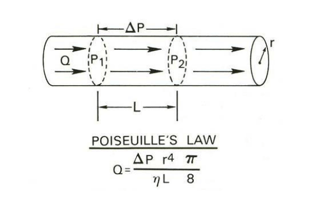Equations are a MCAT test-taker’s best friend, yet many students are afraid of them. They are powerful tools because they encapsulate a huge amount of information in a tiny package that you can easily memorize. They’re not everything –– you still need to learn loads of conceptual information and facts to do well –– but understanding how to use equations is the most direct way to improving your score on the science section.
Equations: How can they help?
1) The questions
You must understand the questions that the equation is answering. Without this context, knowing the equation is useless and might even confuse you. A general rule of thumb is this. When you have an equation, you can solve for any of the variables and isolate on one side of the equals sign, right? Therefore, that equation will be useful for determining any of the variables, if there is only one unknown. If there are two unknown variables, the equation will be help determine the relationship between the two. More on this below.
2) The variables
An equation will help only if you understand what each variable stands for. This information alone will help you recall which physical/chemical elements are involved in solving a particular problem. Understanding the variables and their units is the first step.
3) The relationships between the variables
This is where understanding equations starts to pay huge dividends. How does one property affect another? Say we have two properties, A and B, of a physical system. They could be anything—like the viscosity of a fluid and the rate of the fluid’s flow through a pipe. Do these properties increase together (a direct relationship)? Or does one decrease as the other increases (an indirect relationship). Even further, how do the magnitudes of the changes compare? Does a little change in one result in a huge change in the other? Or do they change in a proportional fashion? All this information doesn’t need to be memorized—just remember the equation and you’re golden. x If two variables on either side of the equals sign are both in the numerator or both in the denominator, they are directly related. If they are on opposite sides of the fraction, then they are inversely related. x If a variable is taken to an exponent, it means that a little change in that variable will have an outsize impact on the value of other variables (unless, of course, they have the same or larger exponent applied to them).
4) Quantitative results
Remembering equations, and how to quickly rearrange them, will make you a much more confident and efficient solver of quantitative problems on the MCAT.
5) Intuition
Knowing the equations like the back of your hand gives an intuitive understanding of what concepts go together and how they’re related.
An example: Posseuille’s law
1) The questions:
This equation explains how fast fluid flows through a pipe as a function of various variables.
2) The variables:
Q is the volume flow rate (L/s). dP is the pressure differential (Pa); think of it as the push that propelling water through the pipe. r is the radius of the pipe. The n symbol (greek letter eta) is viscosity, basically how thick the fluid is. L is the length of the pipe. Usually you can just forget the pi/8 because it’s a constant, so it doesn’t really affect the relationship between the variables at all. Because the radius is to the fourth power, it is very influential in determining the flow rate.
3), 4)—
You get these through studying the equation and practice.
How do I master equations?
There is no shortcut here, if you really want to score high on the MCAT. The equations are the shortcut, and you can’t shortcut the shortcut, so to speak. You must memorize the important ones! To be truly prepared for the MCAT, you have to master them. The way to do this is simple: make organized lists of the equations, with definitions of the variables! Then read through the list as many times per day as you feasibly can. Make it a ritual. As the weeks go by, you’ll find that you’ll be able to go through the list quicker and quicker. By the time test day arrives, the equations will be second nature.

Comments